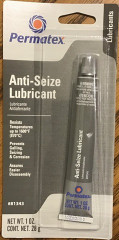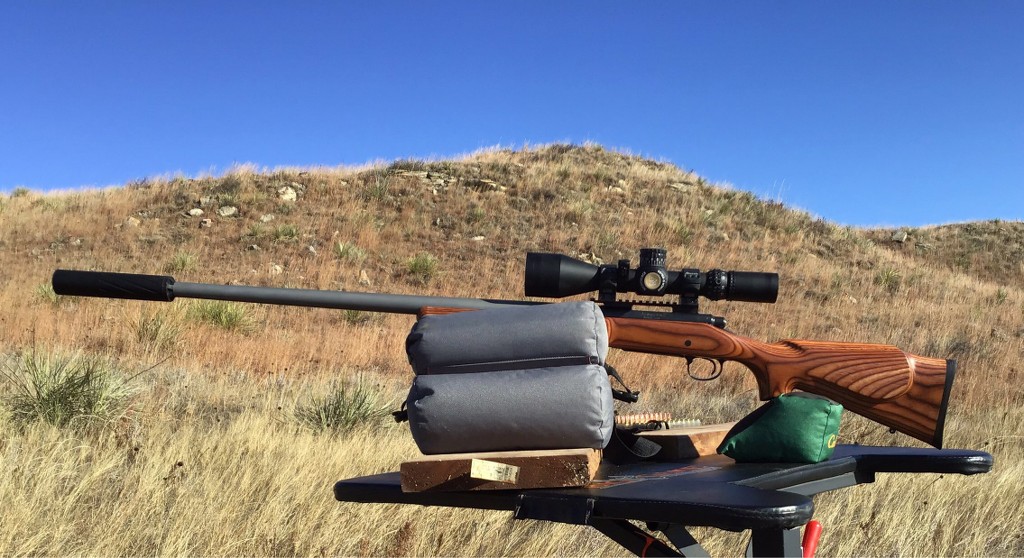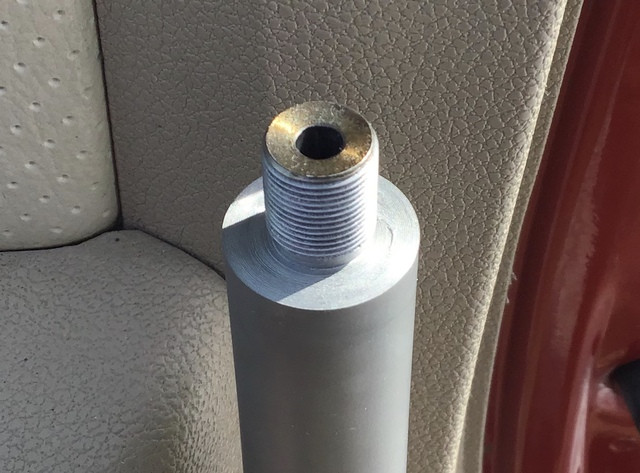What the anti-sieze actually does is deposit microscopic flakes of some other metal or graphite on the surfaces and this will help prevent the welding. Even after the grease has been burned away the anti-seize still works fine because its the nickel, copper or graphite that is doing the work.
Here is one of the two identical tubes of AS I bought together, this one not opened. It is what I used on my rifle:

Maybe I used the
wrong kind of Permatex Anti-Seize? I can only guess why some people have used some kind of Permatex Anti-Seize and had no problem while I immediately had a major problem. All I know is I had a rifle/scope/ammo setup that for months hardly ever busted .5 MOA, and usually
averaged .3 or better. Here it is with its newly added Bartlein barrel on a p-dog town last November:

Then a couple of weeks ago I substituted the AS for the silicone grease I had been using (without any problems whatsoever, I just thot that since a bunch of guys on SH were raving about how great AS works, I'd try it). I did not think I was over-applying it, certainly no more than the silicone I usually use.
Within minutes of firing my first shot my accuracy went completely to hell. (Well, 1.5 - 2 MOA would be fine for some people, but you get the drift.) Started checking all the usual suspects (base and ring screws, and chamber). Nothing. Checked my crown and found this:

There was nothing that looked like the gray AS on my crown, but what was there looked exactly as you described - the grease had been burned away and a metallic substance was left behind, doing its intended job of preventing any
galling of my crown. A rag and Hoppe's 9 did not faze it. I took it home and found that neither brake-cleaner or anything I had would remove it. It was as if it had been
brazed onto My crown.
I wish I could have gotten a better photo of it, but I can tell you that it was not at all even. One look at it and, as someone who has turned several crappy-shooting rifles into tack-drivers simply by repairing the crown, in some cases eliminating gouges and dings so small they were nearly invisible to the naked eye, I immediately knew what the cause of my sudden inaccuracy was.
So I took some 0000 steel wool to the crown and that finally got the brassy metallic substance off. However, it also screwed up the crown so that the rifle was still inaccurate even with the crap gone. I am only a shade-tree gunsmith, so I'm not sure what I did wrong (probably should not have used steel wool at all), but I was able, with a re-crowning hand tool, to restore most of the accuracy (down to about .5 moa usually). Now that I know that is the problem I will have the barrel recrowned on a lathe and (hopefully) get it back where it was before I decided to try the AS.
And it had nothing to do with "how much" I used. Even after cleaning my baffles and tube (except for the inside of the non-removable end-cap, which is very hard to get to), that damned brassy crap would come back and start sticking (as in, brazed on) to my crown again. I finally had to put a steel primer-pocket brush in a pistol cleaning rod to get all the carbon out of my non-removable end-cap. That, with a long soak in carbon-remover, finally got the last vestiges of the AS out of my can.
So, I any rational person will see why I say you have to be an idiot to put AS on your muzzle threads or shoulder, if you have a very accurate rifle and would like to keep it that way.
My Banishes are titantium and they go on and off my rifles a lot. If I am not shooting 5 days a week then I am shooting 3. I have been more concerned about powder residue, which is highly abrasive, wearing down either my titanium female threads or my SS male threads or shoulder, but using pure silicone grease has seemed to always work great. If only I had left well enough alone.
I find carbon buildup on the muzzle face of my barrels after shooting for a while though the actual bore and exit are always clear. The carbon buildup is concentric and I've not seen any change in accuracy with the buildup. For the last 22 years or so I've been shooting suppressed and building suppressors so I have some real world experience.
I can shoot hundreds of rounds without taking my suppressor off and not have any accuracy degradation from buildup on my crown. (Not that I get that much.) Buildup in the can, however, is a different story.





